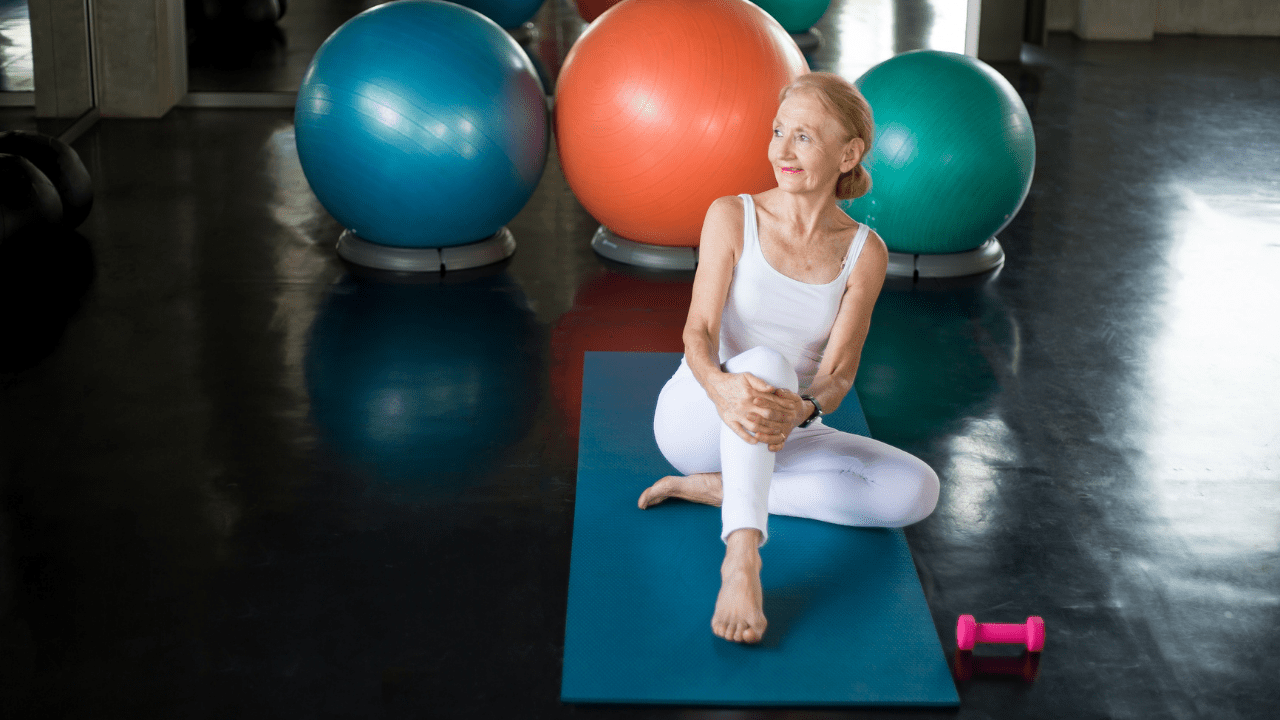Osteoporosis is estimated to affect 200 million women worldwide. As we near the end of Bone and Joint Action Week we want to provide you with some tips for keeping active with Osteoporosis. We know that exercise is beneficial for bone health but when it comes to osteoporosis you’ll find greater success and longevity if you modify your workouts to prevent injury. You might ask, “how should I modify my workouts?” The truth is, it depends. Osteoporosis affects different areas of the body in different ways, but is commonly found in the lower back, hips, and legs so an assessment by a medical professional is critical. It is important to know where your weak spots are so that exercise can be modified appropriately. What’s important to remember is that you’ll need to gradually build up to your movement goals or slow down if you’re already very active to avoid injury 3. A gradual build when modifying a workout is encouraged, like gradually increasing weight for strength training, gradually increasing distance for walking, or taking more walk breaks on your jog or even taking some of your exercise to a pool setting to relieve stress on your bones and joints. If you need help developing an exercise routine, talk to a physical therapist! They are experts at movement and will know how to best move your body without risking injury.
A structured exercise plan will help increase muscle strength, improve balance, improve or maintain posture, relieve pain, and decrease risk of fracture. Prior to visiting with your physical therapist, spend some time thinking about what types of exercise you enjoy the most. Finding a routine you enjoy will lead to greater success and will encourage you to move your body more regularly.
What types of movement build stronger bones?
Aerobic activities:
Experts say that weight-bearing aerobic activities do a fantastic job building muscle and encouraging bone growth. These activities can include jogging, walking, swimming, cycling, tennis, and dancing. It turns out that some load and pounding can encourage bone growth. In an interview with the New York Times, Dr. Bjoern Buehring explains this process is due to a remarkable physiological prescience where bone recognizes that it needs to become stronger. “Whenever a load or force acts on a bone, it deforms the tissue to some extent.” he said. The bone will return to its normal shape but the body will stimulate the production of more bone cells to reinforce the affected bones so they can withstand the force better next time.”
If your doctor tells you that your risk of fracture is low, Dr. Buehring explains, “it actually might be important to go jogging, because lower-intensity activities,” such as swimming or walking, “might not load the bone enough” to stimulate further strengthening 2.
Low-impact activities:
If aerobic activities are out of reach there is still plenty you can do. Exercises focusing on stability and flexibility are easy to learn and work to reduce the risk of falling. Yoga and tai-chi are great options for getting in exercise and start building some bone strength. Both activities use slow, fluid motions to stretch your muscles and fire your core to maintain balance as you transition from one pose to the next. Be mindful however, twisting and bending your spine is not recommended if you have osteoporosis and some movements in yoga and tai-chi will include such movement. Sit-ups, toe touches, and golf swings fall into this category. If advised by a medical professional, it is best that you simply avoid these movements to prevent injury 1.
For other balance and flexibility exercises like tandem walking, leg rises, and standing on one foot it’s good to work out with a chair, a wall, or partner to help out when needed. There is no shame in needing some extra support now and then. Your goal should be to build up the strength and confidence so that you don’t need those supports anymore.
Resistance and strength training:
If aerobic exercise isn’t recommended by your doctor and yoga isn’t challenging enough then resistance and strength training might be for you. Muscle mass and bone density have a strong link to each other so building muscle mass through weight training will also help your bones. Weight machines, free weights, and resistance bands are all ok to use and can be easily adjusted to meet your specific needs. Gradually increase the amount of weight and resistance you use throughout your work out until you hit a spot you are comfortable at. This will reduce the risk of injuries and encourage quicker muscle gain.
Always consult a medical professional if you feel pain from your workouts. A physical therapist can help you overcome pain and injuries and give you the tools to continue exercising in a safe manner.
Learn more about Orthopedic Rehabilitation at Spooner Physical Therapy. Ready to schedule an appointment? Click Here to schedule an appointment or complimentary movement screen with a Spooner physical therapist at one of our locations throughout the valley.
References
- Madeline R. Vann, M. (2015, Oct 28). Best Exercises for Osteoporosis. Retrieved from Everyday Health: https://www.everydayhealth.com/hs/osteoporosis-bone-health/best-exercises/
- Reynolds, G. (2015, Dec 08). Ask Well: Running With Osteoporosis. Retrieved from The New York Times: https://well.blogs.nytimes.com/2015/12/08/ask-well-running-with-osteoporosis/
- University of Missouri. (2009, March 09). Building Strong Bones: Running May Provide More Benefits Than Resistance Training, Study Finds. Retrieved from Science Daily: https://www.sciencedaily.com/releases/2009/02/090227080005.htm

